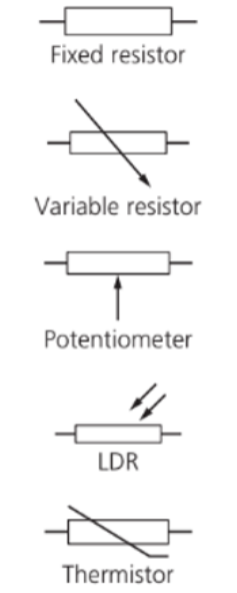What are Variable Resistors?
- Some resistors, called variable resistors, can have varying resistance.
- Often their resistance is adjustable.

- A variable resistor can be used to control the current passing through a circuit.
- If the potential difference is constant then the current decreases as the resistance of the variable resistance increases.
- A variable resistor can be used to control the potential difference of another component in series with it.
- If the resistance of the variable resistor is increased, the potential difference across the other components will decrease.
- This is because more voltage is "used" trying to "push" current through the variable resistor, leaving less for the other component.
- Imagine the monster truck jumping off slopes one by one.
- The variable resistor functions as one of the slopes, but it has pistons underneath, allowing the angle to be adjusted.
- If the angle is decreased, the slope takes less fuel to jump over, leaving more fuel for the second slope.
- If the angle is increased, the slope takes more fuel to jump over, leaving less fuel for the second slope.
- A potentiometer is the name we give to three terminal variable resistors when its sliding contact is being used to produce varying potential difference.
